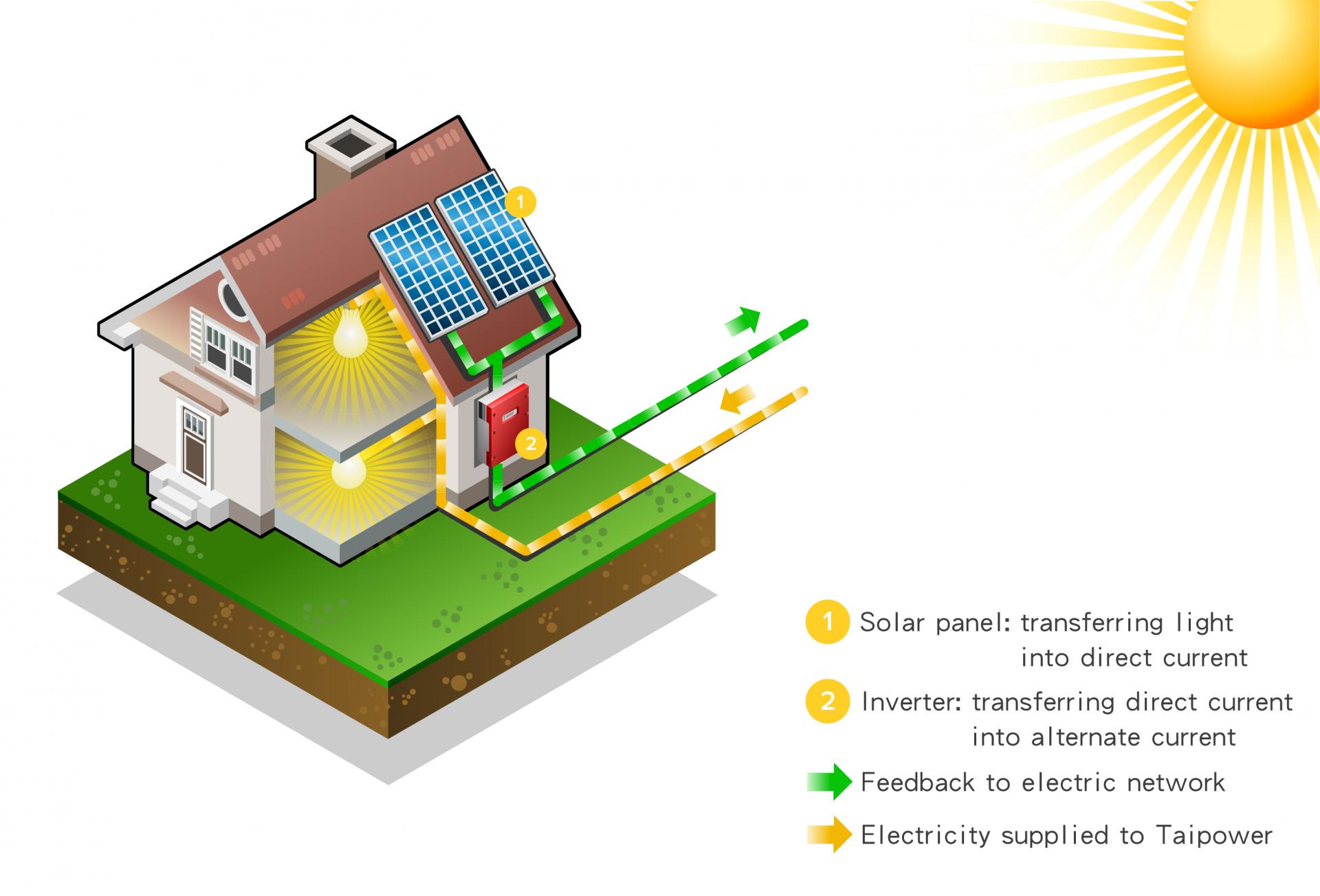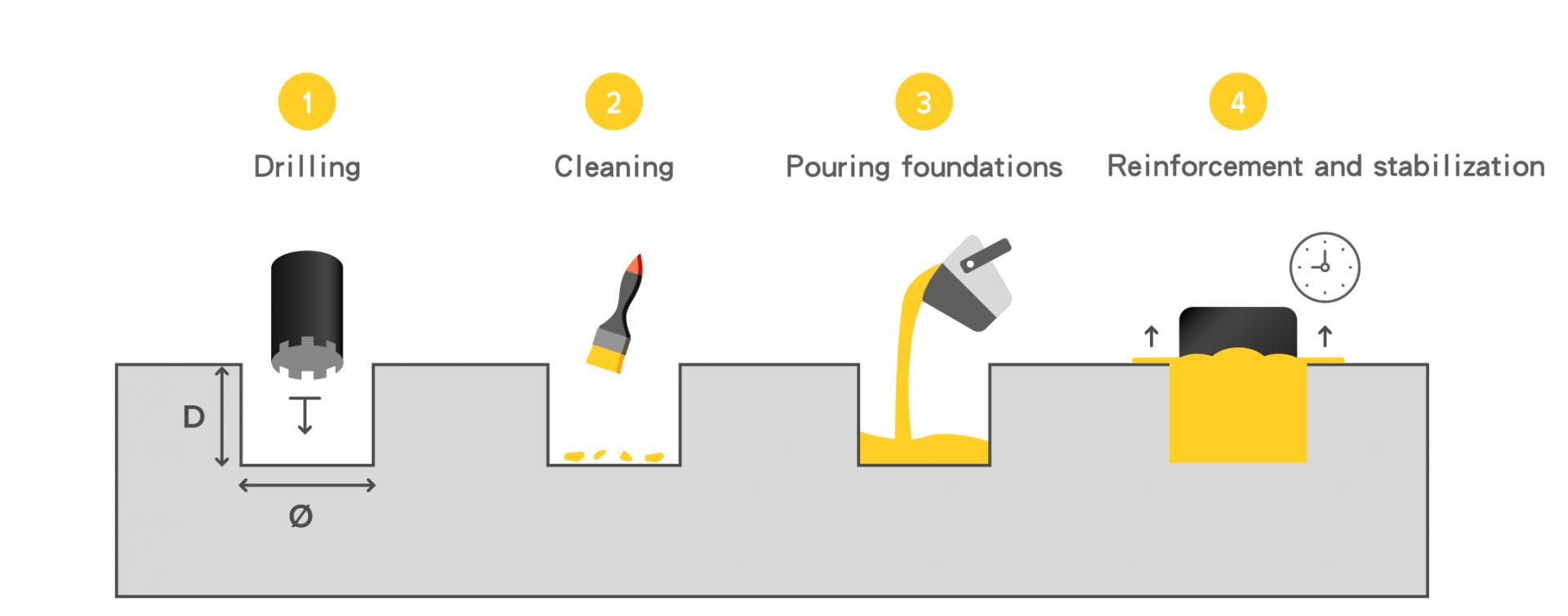Solar power systems, also known as PV Systems, mainly consist of a solar module, inverter, distribution cabinet, monitor system, and battery.
Solar panels can be installed on rooftops (rooftop type), surface of fields (ground type), or surface of water (floating type). After a solar panel receives sunlight, it transfers the light into direct current, and turns the current into alternating current via an inverter, while the distribution box supplies the electricity to indoor electric appliances. The monitor system collects data from the inverter and transmits it to the cloud via wifi, enabling users to view data on the electricity through smartphone, tablet, or computer. (To learn more.)

Solar energy is a renewable energy resource. Every kWh produces 35g of CO2. In Taiwan, every kWh from a coal-fired power plant produces 528g of CO2. Therefore, replacing coal with solar energy could reduce greenhouse gas, thus slowing down global warming.

Currently the government supports FIT (Feed-in Tariff) to promote renewable resource facilities. After contracting with Taipower and reporting to the Bureau of Energy, the company will sell electricity to Taipower at a fixed rate for 20 years. The annual profit is stable, with annual ROI of 6-13%. The investment can be paid in 9-10 years. Local governments also provide subsidies for establishing such systems.
.jpg)


Initial Solar puts high emphasis on quality control of the construction process. Our building methods enhance windproof degree, waterproof degree, structure stability, and reliability of the building method. The building process will be insured and filmed, ensuring the safety of your building and system.

A:Solar power systems do not generate noise during operation. A solar panel of 20,000 kilowatts would only produce the same number of electromagnetic waves as an ordinary appliance (such as computer), which is vastly lower than the environmental limits of the EPA, and does not endanger the human body in any way.
Solar power systems produce no pollution during operation. However, during manufacturing, industrial waste water and gas could be produced, which the factory by law must control to safe standards (waste water and gas disposal). The production of solar panels is like that of semiconductors, albeit without the production of the frontal tip of reticle mask. The production of such frontal tip tends to result in waste gas and toxic water which could result in cancer. Therefore, the pollution it produces is less than semiconductor manufacturers. In addition, compared to traditional coal-fired power generation (thermal power), solar power systems create less than 90% of the air pollution caused by coal-fired generation, even adding in pollution during production.
Solar panels are supported by steel or aluminum framework. The structural design has been approved by technicians. The durability of the structure can handle natural forces like typhoons.➤➤➤To know the construction method
In addition to design and construction, applications must be submitted to Taipower, the Bureau of Energy, and Construction Management Offices of local governments. The installation could take 1-3 months depending on the projects scale, while from signing the contract to the full operation of system takes three to six months. After three months of documentation, selling can begin. ➤➤➤To know the detailed procedure
1. It can be processed through Regulations for Condominium Management
*Article 31: Host a meeting of unit owners and receive the agreement over conference. (Two thirds of the units’ owners must be present, while more than three quarters of participants must agree to it.)
*Article 32: Re-summon the assembly if the agreement is not reached according to Article 31. Three owners of the property and one fifth of residents must be present, while over half of participants have to agree upon the settlement.
*Article 33: Installation on rooftop should be approved by the owner of the level.
*According to Article 34, the notification will be sent to the owners of units 14 days after the meeting. Exclusive usage must be clarified. Note: rooftop should not be considered exclusive.
2. Areas without management committee may follow the regulation of Civil Law.
➤➤➤Read more about examples of installation in condominiums.